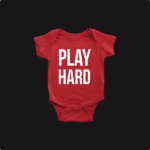Introduction:
In the digital realm, user experience is paramount, and Google continually refines its algorithms to prioritise websites that offer seamless, speedy interactions. The introduction of Google’s Core Web Vitals is a testament to this commitment. In this blog, we’ll dive into the world of Core Web Vitals, explaining their significance, their impact on website performance and SEO, and strategies for enhancing loading speed, interactivity, and visual stability.
Understanding Core Web Vitals:
Core Web Vitals are a set of user-centric metrics that measure key aspects of website performance, such as loading speed, interactivity, and visual stability. These metrics collectively provide insights into the overall user experience a website offers.
Impact on Website Design and SEO:
Explain how Core Web Vitals align with user experience, influencing search engine rankings and visibility.
Loading Speed: The Need for Speed
Loading speed directly affects user engagement and conversions. Google’s Core Web Vitals emphasise the importance of fast loading times, with metrics like Largest Contentful Paint (LCP) measuring the time it takes for the main content to become visible.
Impact on Website Design and SEO:
Detail how website design, including image optimisation and code minification, impacts loading speed and influences the user experience.
Interactivity: A Seamless Journey
Interactivity is a key factor in user satisfaction. Metrics like First Input Delay (FID) measure the time it takes for a website to respond to user interactions. A fast, responsive website encourages user engagement.
Impact on Website Design and SEO:
Discuss how website design and optimisation affect interactivity, emphasising the role of streamlined code and efficient scripts.
Visual Stability: Eliminating Annoyances
Visual stability prevents unexpected layout shifts during page load, enhancing the user experience. Cumulative Layout Shift (CLS) measures this metric and ensures that users can engage with content without frustrating disruptions.
Impact on Website Design and SEO:
Elaborate on how design decisions, such as reserving space for images and ads, can impact visual stability and overall user satisfaction.
Strategies for Improvement
1. Optimise Images: Compress images to reduce file sizes and improve loading speed.
2. Prioritise Critical Resources: Load crucial elements first to enhance perceived loading speed.
3. Minimise Third-Party Scripts: Limit external scripts that can slow down page rendering.
4. Implement lazy loading: load images and content as users scroll, improving interactivity.
5. Avoid Layout Shifts: Set explicit dimensions for elements to prevent unexpected shifts.
Case Study: From Lag to Leadership: A Core Web Vitals Journey
Share a case study of a business that optimised its website for Core Web Vitals, resulting in improved loading speed, interactivity, and user engagement.
Conclusion:
Google’s Core Web Vitals update signifies a shift towards prioritising user experience in search engine rankings. By understanding and optimising these key metrics, businesses can create websites that offer seamless interactions, fast loading times, and visual stability. At AETHERIA, we specialise in crafting websites that excel in core web vitals, driving improved SEO performance and user satisfaction. Contact us to explore how we can optimise your website’s design, speed, and overall performance to align with Google’s evolving standards.






